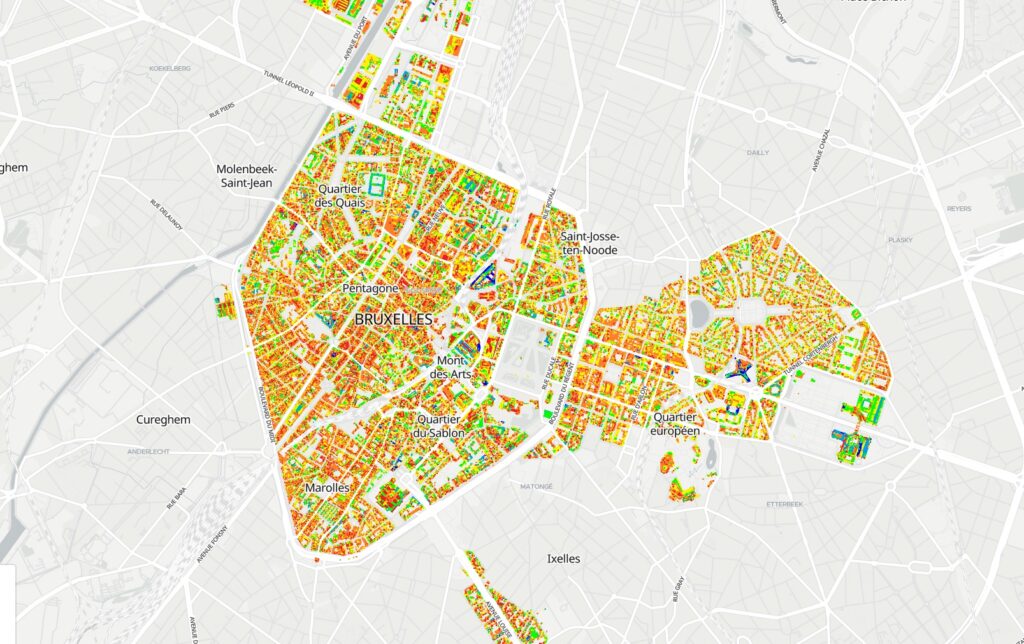In January 2023, Brussels embarked on an innovative project to identify thermal efficiency across the city. A small plane, equipped with an infrared camera, soared above, capturing data on heat loss from buildings. The results of this aerial survey are now accessible to the public, providing a detailed heat map that shows how well buildings retain heat.

Understanding the Heat Map
The heat map utilizes color coding to indicate the level of thermal loss in buildings. Areas depicted in red signal significant heat loss, suggesting poor insulation. Conversely, regions shown in blue demonstrate better insulation efficiency. This tool is particularly useful for homeowners and potential buyers to assess the energy efficiency of properties.
Implications for Property Owners
The primary goal of this initiative is to encourage property owners to improve their buildings’ insulation, particularly those classified as energy inefficient. By highlighting areas of significant heat loss, the city hopes to motivate renovations that will enhance thermal efficiency, reduce energy consumption, and lower heating costs.
How to use the Heat Map
To access the heat map, users simply enter their address on the dedicated platform. A satellite image of their building appears, overlaid with color-coded thermal data. This user-friendly tool is mainly focused on the Pentagon area of Brussels but offers invaluable insights into the city’s overall energy efficiency landscape.
Benefits of Improved Insulation
Improving a building’s insulation has multiple benefits:
- Reduced Energy Bills: Enhanced insulation leads to lower heating requirements, significantly cutting energy costs.
- Environmental Impact: Better insulation contributes to reduced carbon emissions, aligning with broader environmental sustainability goals.
- Increased Comfort: Properly insulated buildings maintain more consistent indoor temperatures, improving overall comfort.
Challenges and opportunities
While the heat map presents a clear picture of thermal efficiency, it also highlights the challenges faced by older buildings lacking modern insulation. These properties often require substantial investment to upgrade. However, the potential for energy savings and increased property value makes such investments worthwhile.
Financial Incentives and Support
Recognizing the financial burden of insulation upgrades, Brussels offers various incentives and support programs to assist property owners. These initiatives aim to make energy-efficient renovations more accessible and affordable.
Future directions
The success of the heat map project in Brussels could serve as a model for other cities aiming to improve urban energy efficiency. As technology and data collection methods evolve, such tools will become increasingly vital in addressing energy waste and promoting sustainable living.
Conclusion
Brussels’ heat map project is a significant step forward in visualizing and addressing the challenge of thermal efficiency in urban environments. By providing property owners with a clear depiction of heat loss, the city not only highlights areas in need of improvement but also offers a roadmap for achieving greater energy efficiency. As we move towards more sustainable living practices, initiatives like this play a crucial role in guiding both individual and collective action towards a more energy-efficient future.

 Open Immovlan
Open Immovlan